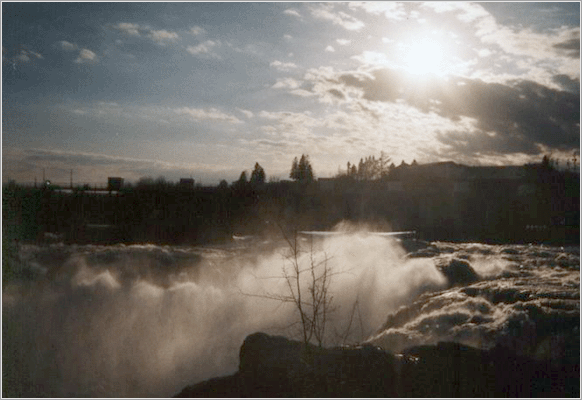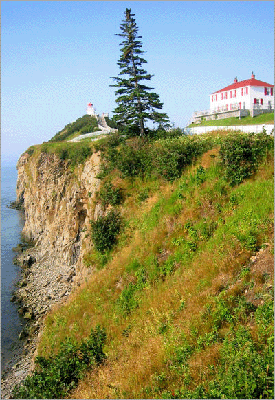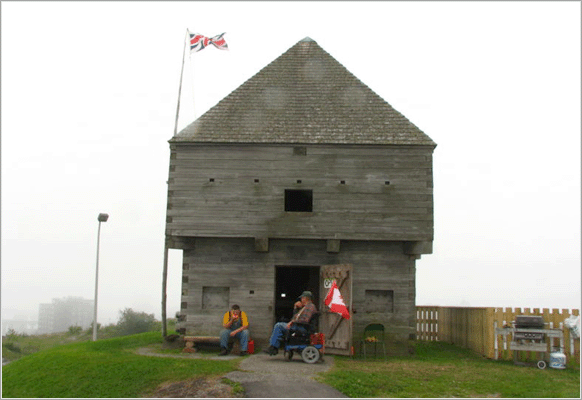Living in Canada:
New Brunswick
Overview
 Grand Falls
Grand Falls
New Brunswick is one of Canada's three Maritime provinces, and the only constitutionally bilingual province (French and English) in the country. Its capital is Fredericton. In the 2011 nationwide census, Statistics Canada estimated the provincial population to have been 751, 171. The majority of the population is English-speaking, but there is also a large Francophone population (33%), chiefly of Acadian origin.
Each province in Canada has been influenced by Immigration and New Brunswick is an excellent example; where new immigrants founded the Atlantic Ballet of Canada based in Moncton, featuring Russian-trained dancers.
Geography & Immigration
Geography can play an important role in Canadian Immigration. Often the terrain, whether mountainous, hilly or even plains-like can serve as a familiar reminder of home and help new immigrants to Canada adjust to their new lives. New Brunswick is bounded on the north by Quebec's Gaspé Peninsula and Chaleur Bay. Along the east coast, the Gulf of Saint Lawrence and Northumberland Strait are found. In the south-east corner of the province, the narrow Isthmus of Chignecto connects New Brunswick to the Nova Scotia peninsula. The south of the province is bounded by the Bay of Fundy. On the west, the province borders the American state of Maine. The province differs from its neighbours physiographically, climatologically and ethnoculturally. The major river systems in the province include the St. John River, Petitcodiac River, Miramichi River, St. Croix River, Kennebecasis River and the Restigouche River. New Brunswick lies entirely within the Appalachian Mountain range. The eastern and central part of the province consists of the New Brunswick Lowland. The Caledonia Highlands and St. Croix Highlands extend along the Bay of Fundy coast, reaching elevations of 300 metres. The northwestern part of the province is comprised of the remote and more rugged Miramichi Highlands, as well as the Chaleur Uplands and the Notre Dame Mountains with a maximum elevation at Mount Carleton of 820 metres. The total land and water area is 72, 908 kms², 80% of which is forested. The major urban centres lie in the south of the province.
| Ethnic origins | |
|---|---|
| Ethnic origin | Percent |
| Canadian | 57.78% |
| French | 26.8% |
| English | 22.96% |
| Irish | 18.87% |
| Scottish | 17.73% |
| German | 3.82% |
| Acadian | 3.64% |
| First Nations | 3.31% |
| Dutch | 1.86% |
| Welsh | 1.06% |
Immigration Profile
 Cape Enrage
Cape Enrage
Much of the English-Canadian population of New Brunswick descended from Loyalists who fled the American Revolution. This is commemorated in the province's motto, Spem reduxit ("hope was restored"). There is also a significant population with Irish ancestry. This was the result of waves of Canadian Immigration from Ireland, after each successive potatoe famine, especially in Saint John and the Miramichi Valley. People of Scottish descent have immigrated to ths region because of the geography is similar to their native land. They are scattered throughout the Province with higher concentrations in the Miramichi and in Campbellton.
First Nations in New Brunswick include the Mi'kmaq and Wolastoqiyik (Maliseet). The first European settlers, which can be considered our earliest Canadian immigrats, the Acadians, are today survivors of the Great Expulsion (1755) which drove several thousands of French residents into exile in North America, the UK and France for refusing to take an oath of allegiance to King George III during the French and Indian War. American Acadians, who wound up in Louisiana and other parts of the American South, are often referred to as Cajuns.
More recently, the Atlantic region attracted a slightly larger share of recent immigrants who came to Canada between 2001 and 2006. According to the Canada 2006 Census, during this period, an estimated 13,500 immigrants settled in the Atlantic region, or 1.2% of the 1.1 million Canadian immigrants. 26,400 of the Canadian immigrants during this time settled in New Brunswick, with the United States being the top source country.
Government & Immigration
New Brunswick has a unicameral legislature with 55 seats. Elections are held at least every five years but may be called at any time by the Lieutenant Governor (the vice-regal representative) on consultation with the Premier. The Premier is the leader of the party that holds the most seats in the legislature.
There are two dominant political parties in New Brunswick, the Liberal Party and the Progressive Conservative Party. While consistently polling approximately 10% of the electoral vote since the early 1980s, the New Democratic Party has elected few members to the Legislative Assembly. From time to time, other parties such as the Confederation of Regions Party have held seats in the legislature, but only on the strength of a strong protest vote.
The dynamics of New Brunswick politics are different from those of other provinces in Canada. The lack of a dominant urban centre in the province means that the government has to be responsive to issues affecting all areas of the province. In addition, the presence of a large francophone minority dictates that consensus politics is necessary, even when there is a majority government present. In this manner, the ebb and flow of New Brunswick provincial politics parallels the federal stage.
On October 7th, 2014 Brian Gallant was elected Premier of New Brunswick.
Economy & Immigration
Modern technology infrastructure for business has made New Brunswick and ideal destination for Canadian Immigration. New Brunswick has a modern service based economy dominated by the finance, insurance, health care and educational sectors and this is based out of all three of the principal urban centres. In addition to the above; heavy industry is found in Saint John, Fredericton is dominated by government services, universities and the military and Moncton is a commercial, retail, transportation and distribution centre with important rail and air terminal facilities.
New Brunswick also has a healthy resouce sector in its economy, best known for forestry, mining, mixed farming and fishing. The most valuable crop is potatoes, while the most valuable fish catches are lobster and scallops. Tourism is becoming increasingly important, especially in the Passamaquoddy region (dominated by the resort town of St. Andrews), and in the southeast of the province, centred by Moncton and Shediac. The largest employers are the Irving group of companies, several large multinational forest companies, the Government of New Brunswick, and the McCain group of companies.
Education & Immigration
New Brunswick has a comprehensive parallel anglophone and francophone public school system serving from kindergarten to grade 12. There are also several secular or religious private schools in the province, such as the university preparatory Rothesay Netherwood School .
As with all provinces and territories, the post seconday school system in New Brunswick is world class and attracts many countries to from around the world to study, who ultimately choose to immigrate to New Brunswick. The New Brunswick Community College system has campuses in all regions of province. This comprehensive trade school system offers roughly parallel programs in both official languages at either francophone or anglophone campuses. Each campus however, tends to have areas of concentration to allow for specialization. There are also a number of private colleges for specialised training in the province, such as the Moncton Flight College; one of the top pilot training academies in Canada.
There are four publicly funded secular universities and four private universities with religious affiliations in the province. These are:
- University of New Brunswick, (Fredericton and Saint John), public, anglophone
- St. Thomas University, (Fredericton), public, anglophone
- Mount Allison University, (Sackville), public, anglophone
- Université de Moncton, (Moncton, Shippagan and Edmunston), public, francophone
- Atlantic Baptist University, (Moncton), private, anglophone
- St. Stephen's University, (Saint Stephen), private, anglophone
- Bethany Bible College, (Sussex), private, anglophone
- New Brunswick Bible Institute, (Hartland), private, anglophone
Arts & Culture
 Fort Howe
Fort Howe
The province has a number of other outstanding tourist attractions. These include the New Brunswick Museum, Kouchibouguac National Park, Mactaquac Provincial Park, the Beaverbrook Art Gallery, King's Landing Historical Settlement, Village Historique Acadien, Les Jardins de la Republique, La Dune de Bouctouche, Saint John Reversing Falls, Magnetic Hill Zoo, Crystal Palace, Cape Jourimain National Wildlife Preserve, Sackville Waterfowl Park, Bay of Fundy and the 41 km Fundy Hiking Trail.